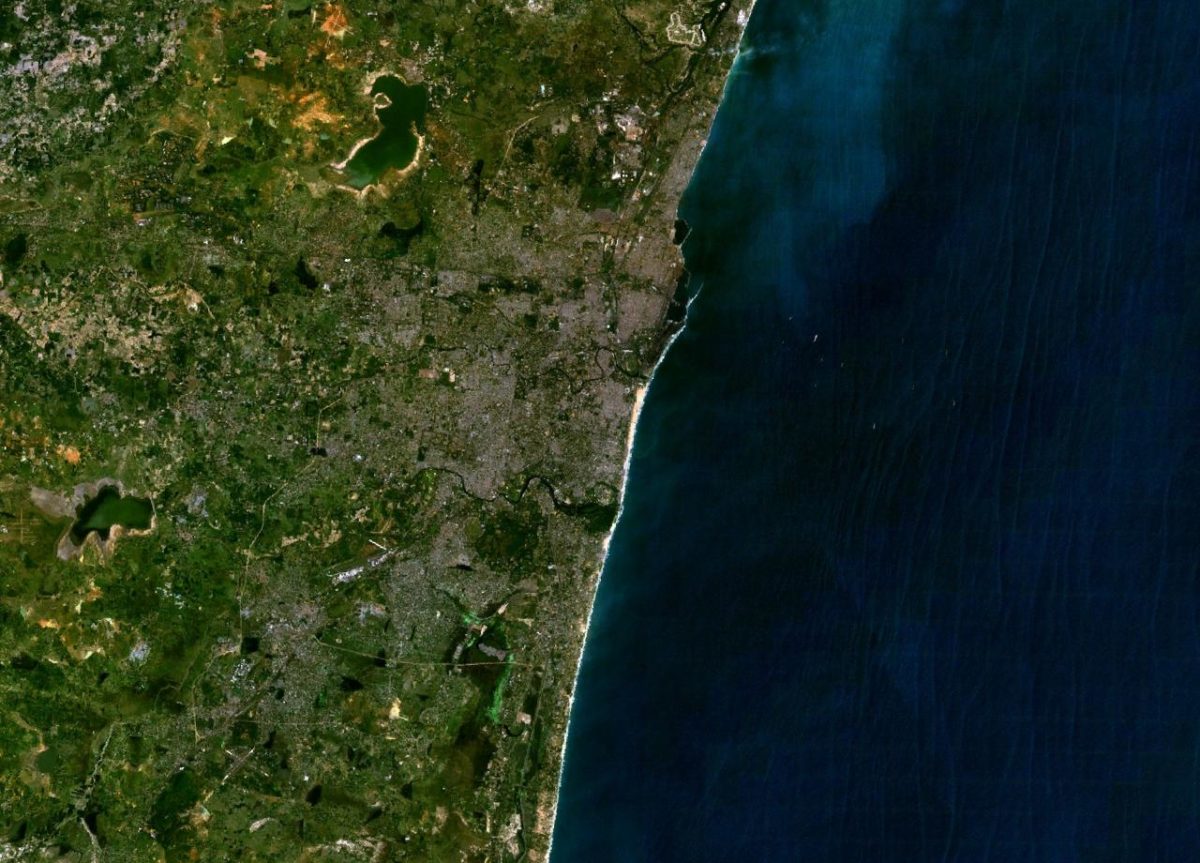An average of 3.15 MW per sq.km could be generated by installing solar PV on rooftops in the area under the Greater Chennai Corporation, according to the report.
It found that almost half of the 1.38 GW (46%) could come from the residential sector, while railway station rooftops across the city could accommodate 3,582 kW, and metro stations 1,696 kW. Similarly, bus depot roofs and the Chennai International Airport could hold 938 kW and 889 kW, respectively.
Switching to solar power would help the city to reduce its high air pollution levels – 71 micrograms per cubic meter in 2016 – by bringing down its dependence on coal as a source of power, noted Pujarini Sen, Climate & Energy Campaigner, Greenpeace India.
A previous report by Greenpeace, meanwhile, pegged Hyderabad’s solar rooftop potential at 1.73 GW, if the roofs of all buildings within the Greater Hyderabad Municipal Corporation (GHMC) were to be covered with PV panels. This puts Hyderabad second only to New Delhi in terms of potential, which, under the same conditions, could generate 2 GW.
In terms of installed capacity, as of September 2017, Maharashtra (with 237 MW) overtook Tamil Nadu (191 MW) to become the largest solar PV rooftop state in India, according to research from Bridge to India.
Low response
Overall, rooftop solar has not received the desired response in India’s metro cities, despite the government’s encouraging rooftop solar policies and regulations.
Even in Delhi, residential solar has not really taken off, in spite of a generous solar policy and a generation-based incentive (GBI) for such projects, reports the Times of India.
In fact, between September 2016 and March 2017, only 31 residents had taken advantage of the GBI. Since last March, this figure grew to 300, however, according to data from the Energy Efficiency and Renewable Energy Management Centre (EEREM).
The center cited many reasons for the poor uptake, including residents’ concerns about solar panels occupying their roof space for 25 years. Further, its analysis revealed that the major cost benefit from solar PV rooftop systems was for those who consumed more than 400 units.
“For a 10-20 kW solar rooftop system, the tariff will be Rs 4 per unit compared to Rs 7 to Rs 8 per unit for those consuming more than, say, 400 units of conventional energy. Solar rooftop systems are best suited to reduce your peak load and bringing you to a lower power slab,” an EEREM official was quoted as saying.
Solar rooftop adoption in the residential sector is likely to improve with steps like a single-window portal created with help from the Ministry of New and Renewable Energy to connect interested residents with Discoms. It will also have a call center facility to provide customer support.
A more attractive incentive, higher than the GBI of Rs. 2 per kW, would have also helped attracted more residents, said Pujarini Sen, climate and energy campaigner for Greenpeace India.
This content is protected by copyright and may not be reused. If you want to cooperate with us and would like to reuse some of our content, please contact: editors@pv-magazine.com.









By submitting this form you agree to pv magazine using your data for the purposes of publishing your comment.
Your personal data will only be disclosed or otherwise transmitted to third parties for the purposes of spam filtering or if this is necessary for technical maintenance of the website. Any other transfer to third parties will not take place unless this is justified on the basis of applicable data protection regulations or if pv magazine is legally obliged to do so.
You may revoke this consent at any time with effect for the future, in which case your personal data will be deleted immediately. Otherwise, your data will be deleted if pv magazine has processed your request or the purpose of data storage is fulfilled.
Further information on data privacy can be found in our Data Protection Policy.